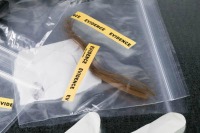Tag: FBI
-

In wake of El Sanadi suicide, Florida IG probes every Broward Health contract since 2012
By Dan Christensen
FloridaBulldog.org
As Gov. Rick Scott and hundreds of others paid their final respects Friday to Dr. Nabil El Sanadi, Broward Health’s late president, Florida’s chief inspector general quietly opened a wide-ranging investigation into how the hospital district hands out millions of dollars in contracts. -

/
5356 SEEN/
The FBI built a database that can catch rapists — almost nobody uses it
By T. Christian Miller
ProPublica
For roughly 30 years the FBI has virtually ignored a system meant to help cops track the behavioral patterns of violent criminals. -

Is Broward terrorist figure Adnan Shukrijumah dead? FBI can’t confirm it
By Dan Christensen
FloridaBulldog.org
Six months after former Broward resident and suspected al Qaeda leader Adnan El Shukrijumah was reported killed by the Pakistan army, the FBI has not confirmed his death and continues to include him on its list of “Most Wanted Terrorists.” -

/
5077 SEEN/
Another Startling Verdict for Forensic Science
By Ryan Gabrielson
ProPublica
With the introduction of DNA analysis three decades ago, criminal investigations and prosecutions gained a powerful tool to link suspects to crimes through biological evidence. This field has also exposed scores of wrongful convictions, and raised serious questions about the forensic science used in building cases.
Support Florida Bulldog
If you believe in the value of watchdog journalism please make your tax-deductible contribution today.
We are a 501(c)(3) organization. All donations are tax deductible.

Join Our Email List
Florida Bulldog delivers fact-based watchdog reporting as a public service that’s essential to a free and democratic society. We are nonprofit, independent, nonpartisan, experienced. No fake news here.


